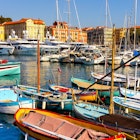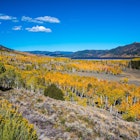
Jul 11, 2025 • 5 min read
Get to know Kyoto for free with these top experiences that won't cost you a thing.

Jul 11, 2025 • 5 min read
Get to know Kyoto for free with these top experiences that won't cost you a thing.

Jul 11, 2025 • 7 min read
The 2026 Winter Olympics in northern Italy will be the most geographically widespread games ever. Here’s all you need to know as you plan your trip.

Jul 11, 2025 • 10 min read
From culture-packed coastal towns and cities to the iconic Red Centre, here are the best places to visit in Australia.

Jul 11, 2025 • 8 min read
We've planned you a weekend in Kansas City: barbecue, boutiques and a bit of quirk.

Jul 11, 2025 • 11 min read
With its striking history, medieval center and foodie connections, York is one of northern England’s must-see cities. Here are the best things to do.

Jul 11, 2025 • 11 min read
College towns are perfect for a quick weekend escape, and packed with plenty of entertainment, sports, arts, culture and charm.

Jul 11, 2025 • 7 min read
Explore fascinating Shikoku, well off the standard trail of most visitors to Japan. Peek into the lives of the locals on Japan’s fourth largest island.

Jul 11, 2025 • 8 min read
Kansas City is not flashy – but it will win you over, with warmth, with soul, with just the right amount of charm. Here’s a guide for first-time visitors.

Jul 11, 2025 • 6 min read
Even in an expensive city like Kyoto, you can find deals to help you enjoy your trip. Here are our top tips for a budget-friendly experience.

Jul 11, 2025 • 6 min read
A trip to Kyoto will make unforgettable memories for little one. Here’s a full guide to family-friendly Kyoto activities and traveling to Kyoto with kids.

Jul 10, 2025 • 8 min read
Experience the best of Kazakhstan in Central Asia with this guide to the top things to do.

Jul 10, 2025 • 14 min read
These underrated cabin destinations deliver all the cozy vibes and natural beauty, minus the traffic and tourist traps

Jul 10, 2025 • 8 min read
Explore these ruins to grasp the extent of the Roman Empire, from Western Europe to North Africa to the Middle East.

Jul 10, 2025 • 10 min read
California may be besotted with cars but that's not the only way to see the Golden State. Here's everything to know about getting around California.

Jul 10, 2025 • 5 min read
Stretch your legs away from the big-city chaos and discover more of southern France with these top day trips from Marseille.

Jul 10, 2025 • 9 min read
What activities are on your Utah itinerary? Here are 19 amazing ideas for the best things to do in Utah, including national parks, hot springs and gardens.

Jul 10, 2025 • 3 min read
Openness and diversity are non-negotiable at these small-town celebrations of the LGBTIQ+ community.

Jul 10, 2025 • 13 min read
Every corner of Great Britain is infused with history, but in England, the storybook goes into overdrive. Here are the best historic sights in England.

Jul 10, 2025 • 9 min read
Located between Hanoi and Ho Chi Minh City, Danang is blessed with mountains, a long city beach, fresh seafood and a laid-back vibe

Jul 10, 2025 • 16 min read
With FIFA World Cup matches in Mexico, Canada and the USA next summer, traveling football fans are spoiled for choice. Here's our guide to where to go.

Jul 10, 2025 • 5 min read
Our creative director and content creator decided to put her phone away and pick up a camera for a trip to India.

Jul 10, 2025 • 5 min read
Plan your transportation around Houston, Texas, with this guide to local transit.